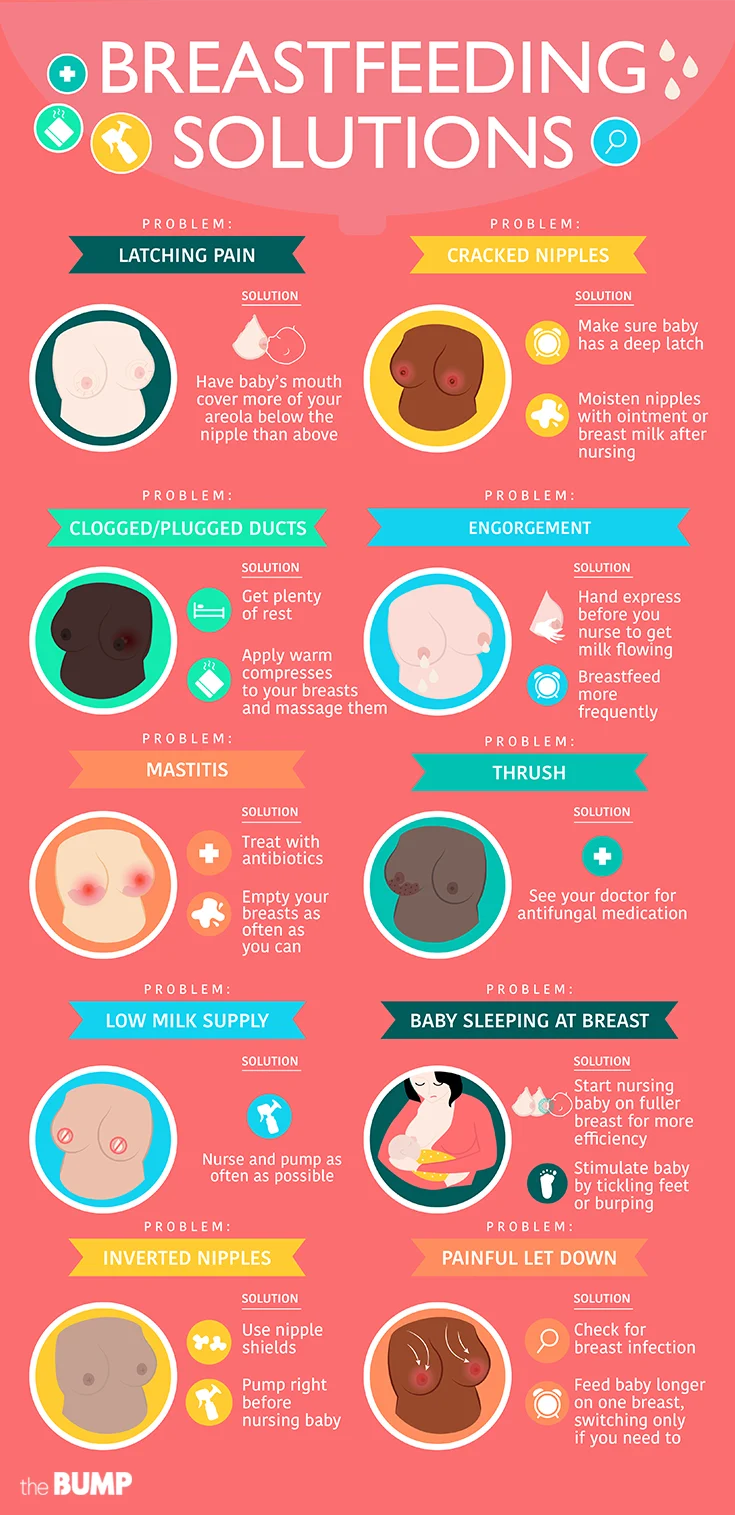What Causes Sore Nipples and How to Treat Them
A comfortable rocker, a content newborn full after a breastfeeding session—and cracking, bleeding, sore nipples. What’s wrong with this picture? How could your breasts feel as if they’re on fire when everything around you is so calm? Read on for answers—and relief.
Breastfeeding should never be painful, whether you’re nursing a one-day-old or a 2-year-old. Even in the first few days of nursing, your breasts may feel sensitive to the tugging and pulling—“it can be powerful,” says Gina Breceda, RN, and international board certified lactation consultant (IBCLC) in Tarzana, California, “but not painful.” And yet, while sore nipples aren’t “normal” per se, they aren’t unusual, either. Addressing the nipple pain can help pinpoint a problem that may need troubleshooting. Here are a few common culprits behind sore nipples and what to do about them.
• Baby’s latch needs adjustment. If you feel pinching or see bleeding, baby may not have the correct latch. Many hospitals have a lactation consultant on staff, so see her before you and baby head home to get the latch right. “Pinching usually means baby has a shallow latch and is pressing the nipple to the roof of his mouth,” Breceda says. Nipple pain fix: Work with a lactation consultant to get the latch just right. “Offering the breast like a ‘sandwich,’ laying back a little and allowing baby to lead, will help mothers in most cases,” says Pamela Hendrix, an IBCLC in Fort Lauderdale, Florida.
•Your pump accessories are the wrong size. If you notice nipple pain just as you’ve introduced pumping into your routine, the accessories may be to blame, says Amy Preto, RN, IBCLC, at University of Maryland St. Joseph Medical Center in Towson. Flanges (the plastic pieces that fit over your nipple) are not one size fits all, and too-small flanges can cause nipple pain. Nipple pain fix: Before buying or renting a breast pump, make sure you have the correct flange size and understand how to use the machine correctly. “In general, the nipple should move easily in the ‘tunnel’ of the shield and be comfortable while pumping,” says Lisa Chassagne, RN, IBCLC, at University of Maryland Upper Chesapeake Medical Center.
•Your pump is set too high. Faster doesn’t equal better when pumping, and if you put your pump on the most powerful setting right away, you could cause your nipples to crack and bleed. Nipple pain fix: “When it comes to pump suction, the recommendation is to turn it to ‘maximum comfort level,’ so this may vary from woman to woman,” explains Chassagne.
•You may have a clogged milk duct. If you experience nipple pain after you’ve already started breastfeeding, the soreness could be a medical issue—such as a clogged milk duct or mastitis (an infected duct). Nipple pain fix: Speak with your OB or a lactation consultant, who can help offer an assessment and treatment. Both typically can be treated with warm compresses and more frequent emptying (via breastfeeding or pumping). Mastitis would also require antibiotics.
•Baby is teething. When baby is beginning to teethe, he may experimentally bite down on mom’s nipple, Hendrix explains. Nipple pain fix: Work with a lactation consultant who can recommend techniques to stop baby from biting. For instance: Note the timing. Does baby bite at the end of a nursing session? If so, take him off the breast immediately. If he bites mid-session, momentarily unlatching with a sharp “no!” or “ouch” can teach that biting is unacceptable.
•You’re pregnant. Yes, it can happen—and the hormonal shifts during pregnancy can cause nipple pain and soreness, which, in turn, is exacerbated by nursing. Nipple pain fix: Again, a lactation consultant can help devise a strategy for continuing breastfeeding while pregnant.
•Your nipples are parched. Your nipples are extra sensitive and may feel raw when they rub against a bra or T-shirt. Nipple pain fix: Rub breast milk into the nipples post-feeding. When you’re home and in between nursing sessions, expose your nipples to the air. This eliminates chafing from clothing while allowing your nipples to dry completely, which, in turn, prevents cracking. “It does wonders,” Breceda says.
Check out The Bump’s Breastfeeding Solutions chart:
While you’re tackling the root of the problem, you can also take steps to soothe the soreness on the spot. Here are a few safe strategies that can keep you comfortable during feedings and in between.
•Moisturize with breast milk. The milk or colostrum you’re already producing can act as a powerful balm for your nipples. Spread any excess around your nipples after feeding or squeeze a few drops out and rub onto your nipples. “All those wonderful antibodies you are giving your baby is your own private antibiotic. Use it,” Breceda says. You can even spread your breast milk on any bleeding cracks as well.
•Add a breastfeeding-safe cream. “Once the milk on your nipples has dried, add a thin layer of lanolin or nipple cream,” Breceda says. These creams aren’t harmful to baby, so there’s no need to wash off prior to nursing.
•Wear breast shells. If your nipples are dry or painful, breastfeeding shells can help protect your skin from chafing clothing. “Breast shells are usually a hard-shell front with holes in it to allow for airflow around the nipple; the back is made of soft silicone with a hole in the middle for your nipple to go through. This will give them some air and protection. Some clients call it nipple armor,” Breceda says.
Updated December 2017
Please note: The Bump and the materials and information it contains are not intended to, and do not constitute, medical or other health advice or diagnosis and should not be used as such. You should always consult with a qualified physician or health professional about your specific circumstances.
Navigate forward to interact with the calendar and select a date. Press the question mark key to get the keyboard shortcuts for changing dates.


















































